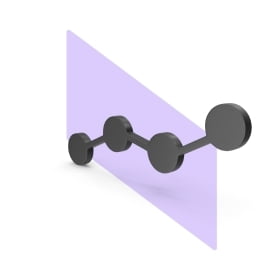Embrace The Metaverse
When the real and virtual merge, users are empowered by a fully immersive, limitless experience.
The Metaverse is the next generation of the World Wide Web. Briefly, Web 3.0.
It is an emerging three-dimensional digital space that uses virtual reality (VR), augmented reality (AR), blockchain, automation, and other advanced technologies to provide users with lifelike personal and business experiences.

Embrace The Metaverse
When the real and virtual merge, users are empowered by a fully immersive, limitless experience.
The Metaverse is the next generation of the World Wide Web. Briefly, Web 3.0.
It is an emerging three-dimensional digital space that uses virtual reality (VR), augmented reality (AR), blockchain, automation, and other advanced technologies to provide users with lifelike personal and business experiences.
Invest in Experience
Eurisko has more than a decade of experience in leveraging next-gen technologies to create engaging experiences.
Cutting-edge Technology
We use the most advanced technologies worldwide for digital creation and integration
Technology Infrastructure
We work according to the DevSecOps process to ensure top-quality and security
Automate Video Publishing
We have a team of experts in data science, extended reality, AI, UX/UI design, development, and quality assurance

The Enterprise Metaverse
This immersive technology extends beyond gaming to the enterprise level, allowing businesses to grow.
Blockchain and the Metaverse
Blockchain allows the monetization of the Metaverse in a decentralized way
New Ecosystem
Blockchain-based metaverse startups are created to buy and sell virtual assets and items.
More Revenue Streams
People pay to have virtual tours, attend concerts, or access others’ games.
Total Security
Digital assets and transactions are unhackable and immutable due to decentralization and irreplaceability.

Extended Reality and the Metaverse
Nothing is impossible with extended reality, and no industry is too complicated or detailed for AR/VR to make a breakthrough.
For businesses operations
For users, players, and consumers

Eurisko Creates a fully extended reality
Eurisko offers AR/VR/MR services using cutting-edge technologies and integrates them with international products.
We design, develop, test, integrate, and launch digital products.
Games
We leverage extended reality to deliver more challenging, exciting, and engaging games on all devices, using 3D models, AI-powered NPCs, superimposition on the elements, and advanced wearables.
Mobile Apps
We develop AR apps by overlaying digital information on real-world objects. For location-based AR, we use phone geolocation data to influence the AR experience within the app. For Marker-based AR, we rely on patterns and interaction with a smartphone camera.
Digital Twins
We build digital twins for a variety of industries, including automotive, healthcare, retail, and manufacturing, as well as for smart cities. By using real-world data, we create simulations that can predict how a product or process will perform, like a vehicle, wind farm, or organ donation.
Wearable Apps
We create apps for wearables like smartwatches and wristbands, as well as we support wearable virtual reality devices like Oculus, Rift, Magicleap, Samsung gear, Google Cardboard, and HTC Vive.
What Industries Benefit From the Metaverse?
EntertainmentMetaverse can revolutionize gaming, event management, and media streaming. |
 |
Real EstateMetaverse real estate or metaverse properties are virtual land parcels and buildings, actual pixels that act as programmable spaces in virtual reality platforms. |
 |
E-Commerce & RetailMetaverse transforms how businesses promote their products and services and sell across continents. |
 |
HealthcareMetaverse is expected to transform the healthcare sector in terms of medical performance, patient accessibility, institution cost-reduction, and industry breakthroughs. |
 |
FintechMetaverse is the 5th stage of evolution in the banking and fintech industries, providing customers with an enhanced personalized virtual banking experience via virtual reality (VR) and augmented reality (AR). |
 |
FAQs
The metaverse is a collective virtual shared space, created by the convergence of virtually enhanced physical and digital reality. It is a network of interconnected, immersive, and interactive 3D virtual worlds where people can socialize, work, create, and interact with digital environments and objects.
The metaverse works by integrating various technologies, such as virtual reality (VR), augmented reality (AR), blockchain, artificial intelligence (AI), and cloud computing, to create an immersive and interactive environment. Users can access the metaverse through devices like VR headsets, smartphones, or computers and interact with other users or digital objects using avatars and virtual tools.
The metaverse aims to provide a digital space for various activities, including socializing, gaming, entertainment, collaboration, commerce, and education. It can potentially revolutionize how people work, learn, and interact with digital content, fostering creativity and innovation.
While virtual reality is a component of the metaverse, it is not the same thing. VR is a technology that enables users to immerse themselves in a simulated environment, while the metaverse is a broader concept that includes interconnected virtual spaces created using various technologies, including VR, AR, and blockchain.
Blockchain and cryptocurrencies allow the monetization of the Metaverse, by enabling the secure exchange of digital assets or value and decentralized ownership of things like lands, buildings, items, and avatars.
Blockchain also makes it possible to create decentralized applications (DApps) and smart contracts, enabling complex interactions and transactions within the metaverse.
The metaverse works by integrating various technologies, such as virtual reality (VR), augmented reality (AR), blockchain, artificial intelligence (AI), and cloud computing, to create an immersive and interactive environment.
Users can interact with other users or digital objects using avatars and virtual tools in the metaverse using devices such as VR headsets, smartphones, or computers.










